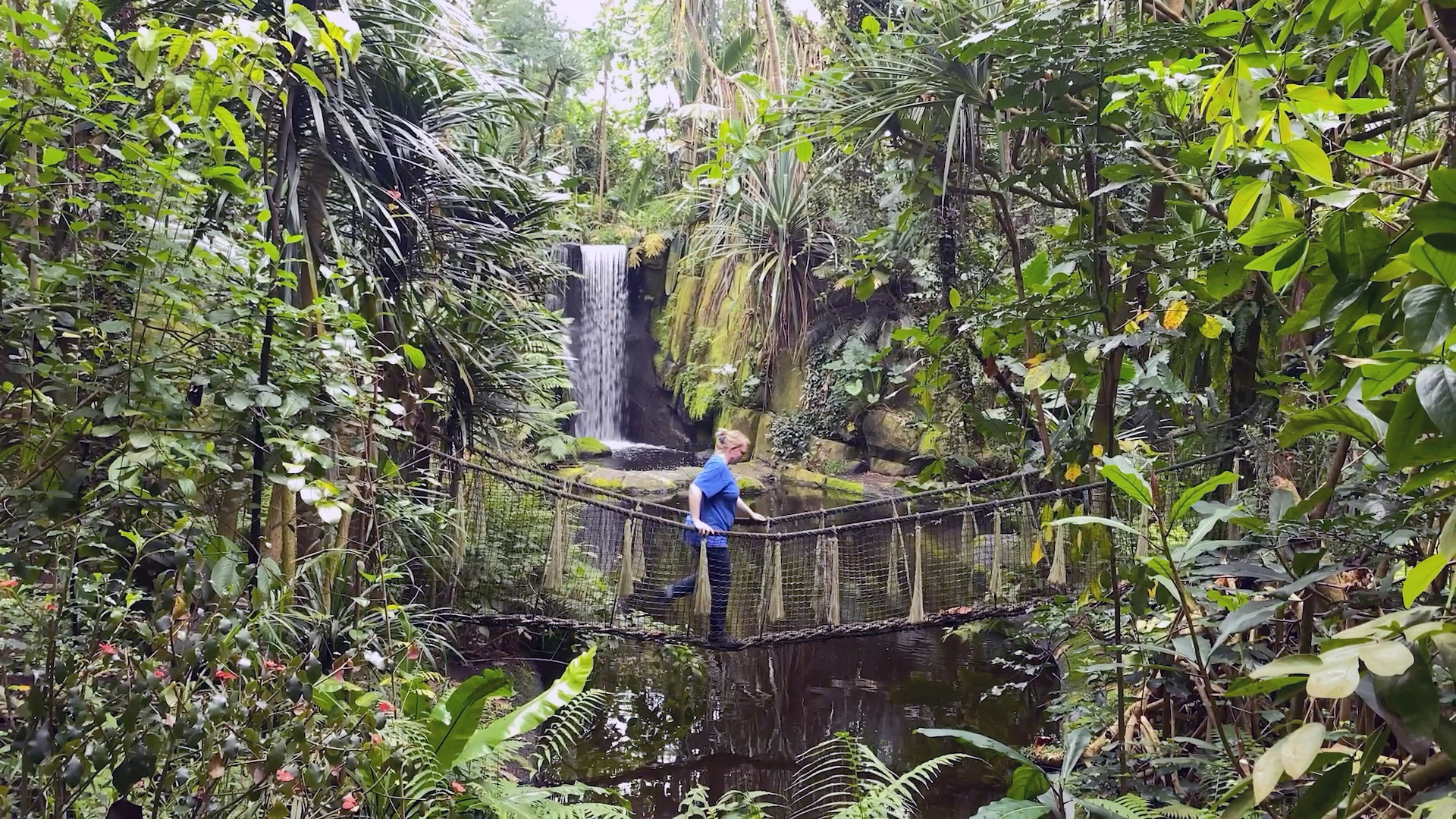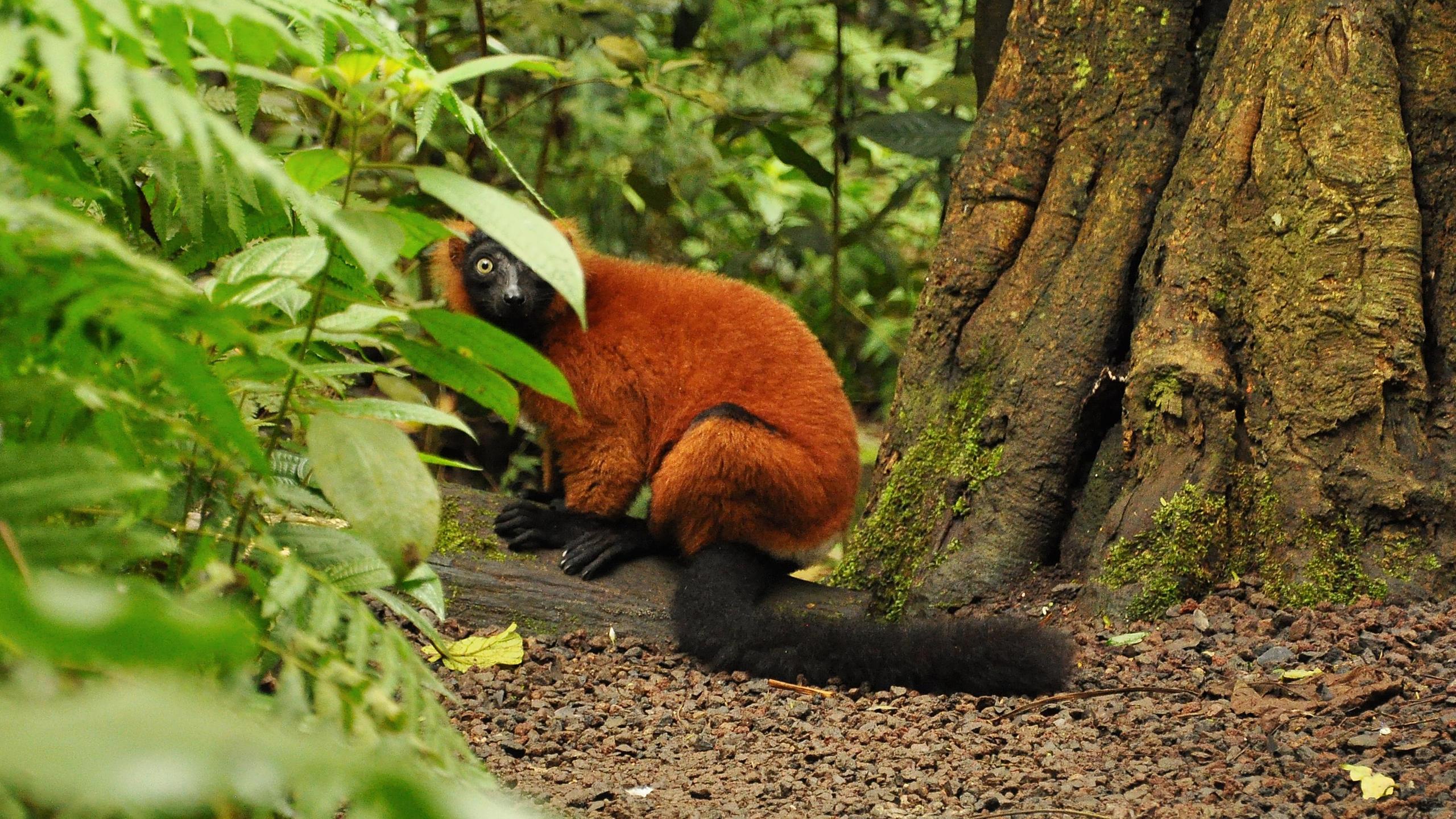
Drones capture DNA in cutting-edge biodiversity research

Researchers in Zurich are using drones to collect environmental DNA (eDNA) in a technique combining robotics and genetics that could change our understanding of Earth’s biodiversity.
The red lemurs at Zurich Zoo are used to the noise that people make, but not so early in the morning. The greenhouse they call home will not open to visitors for another two hours. With a somewhat puzzled look, they observe the group of people on the treetop walkways in the centre of the pavilion.
Working around electronic devices and a pulley, the group is not here to observe tropical animals and plants, but to collect DNA from their environment, by combining robotics and genetic techniques.
It’s a trial that will later be replicated outside the zoo.
“Biodiversity is being lost at a very high rate that we can’t control, partly because we don’t have the tools and data at the time we need them,” explains Kristy Deiner, a professor of genetics at the federal technology institute ETH Zurich.
The technology that her team is testing is designed to accelerate the collection of data on diversity, Deiner says as we step off the platform and into the lush vegetation. Up ahead, a group of students is setting up a portable lab. A few metres away, a pump is sucking water from a pond.

The mini lab enables the sequencing of environmental DNA (eDNA), the genetic material released by every living species in water, the air, the soil, on tree branches and on the screen of the device on which you are reading this article. The analysis of eDNA is a rapidly emerging research method and has opened up possibilities that were unimaginable even just a few years ago. In the past, biologists had to go to the field to list the species present in a given place.
Now, more information can be extracted from a test tube of water or a strip of adhesive brushed through the branches of a tree than from an army of biologists camped out for days in the jungle.
New solutions from the pandemic
For the past decade, Deiner has been working on making methods and tools for eDNA analysis more efficient. The mini lab mounted next to the pond at Zurich Zoo is the result. It allows sequencing of genetic material within a few hours directly in the area where it was collected. There is no need to send samples elsewhere, which reduces the risk of contamination with genetic material not present in the area being investigated.
The development of such technology was accelerated by the Covid-19 pandemic, when laboratories for virus detection popped up everywhere, says Deiner.
“There has been a lot of innovation over the past four years to think about how to do testing in places where resources, such as energy, are limited,” she explains.
But there remains the problem of how to collect samples. That’s where robots come in.
Drones and probes capture eDNA
The fields of genetics and robotics rarely overlap. But when ETH Zurich robotics professor Stefano Mintchev learned about a competition run by XPRIZEExternal link, a US non-profit organisation that promotes technological innovation in biodiversity research, he immediately contacted his colleague, Kristy Deiner. Two years ago, they formed the ETH BiodivXExternal link team and signed up for the competition, which aims to detect and identify as many species in as little time as possible.
Deiner knew how to analyze eDNA, while Mintchev had the expertise to collect samples in the field. In preparation for the competition, the research team modified drones by installing devices that filter eDNA from the air. They also devised a pulley to which either a water pump or a special probe can be attached.
The probe is lowered between trees and bushes and picks up genetic material deposited on leaves and branches, which the drone will bring back to the mini lab.
The idea is simple, but the implementation was not. “We had to do a lot of optimisation work on the design of the probe and the control algorithm that moves it, to reduce the risk of it getting tangled,” Mintchev explains. Sensors that measure the tension in the cable can trigger movements to free it, and if that fails, a mechanism can separate the cable from the drone.
All of this work had to be done in preparation for the semi-finals of the competition, which took place in Singapore in early June in an area of rainforest roughly the size of two golf courses. If the team passes this stage (results are expected by the end of July), it will participate in the finals, which will be held in 2024 in a rainforest in South America or Africa. A total of $10 million (CHF8.7 million) is up for grabs, with $5 million set to go to the winning team.
To prepare, the ETH Zurich team had to test its specially made equipment on tropical vegetation. Luckily, Switzerland also has a rainforest: the Masoala Hall in Zurich Zoo. Besides the red lemurs, some 40 animal and 500 plant species live in the expansive greenhouse.
“Research is one of the tasks of modern zoos,” says Leyla Davis, a research manager at Zurich Zoo. “Part of this consists of collaboration with polytechnic institutes and universities.” She adds that every single vertebrate species in Masoala Hall is cataloged, which allowed the ETH Zurich research team to verify in near real-time whether the DNA collected matched that of the species in the hall.

Millions of species yet to be described
Regardless of its success at the XPRIZE Rainforest competition, the research methods and tools being developed by the ETH Zurich team could prove useful in many areas. In agriculture, for example, they could quickly detect the presence of harmful pests.
“Drones allow access to areas that are too dense, too remote or too dangerous to be reached otherwise,” says Elizabeth Clare, a biologist at York University in Toronto who specialises in the study of eDNA. “It will also be very useful in understanding how genetic material moves and stratifies in the air.” But, she says, the biggest challenge will be automating such technologies so they can be used on a large scale, as “very specific skills are still needed to operate the drones”.
The ETH Zurich team is excited by the thrill of potential discovery. In the natural environment, biologists often find genetic material that is not yet recorded in databases and can therefore not be matched to a known species. When they analyse eDNA and find that it occurs more than once or in different places, they can assume that many of these sequences might belong to a species not yet known to science.
Scientists estimate there are more than 8 million species on Earth (about a quarter of which have been catalogued), but this is just an extrapolationExternal link based on the rate at which science has discovered them in the past.
“We now have a method that will allow us to test whether this is true. It’s a new phase of exploring our world,” Deiner says with a smile. “It makes me think of the explorers who centuries ago found new lands on their ships. Now, we have a new kind of ship to travel on.”
Edited by Sabrina Weiss. Translated from Italian.

In compliance with the JTI standards
More: SWI swissinfo.ch certified by the Journalism Trust Initiative
































You can find an overview of ongoing debates with our journalists here . Please join us!
If you want to start a conversation about a topic raised in this article or want to report factual errors, email us at english@swissinfo.ch.